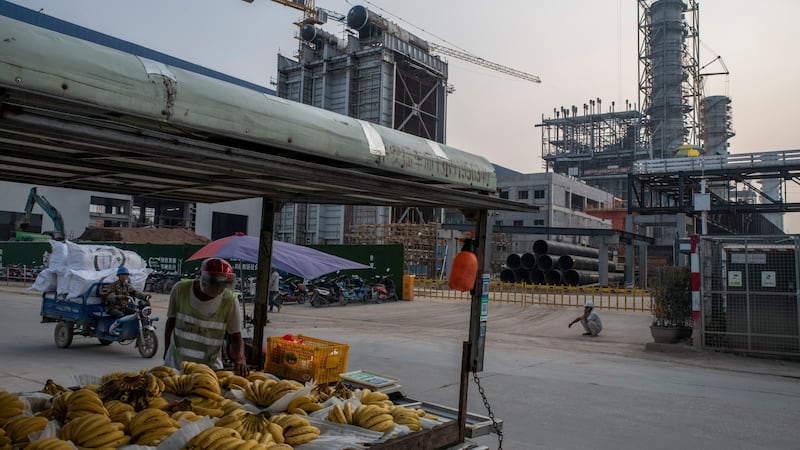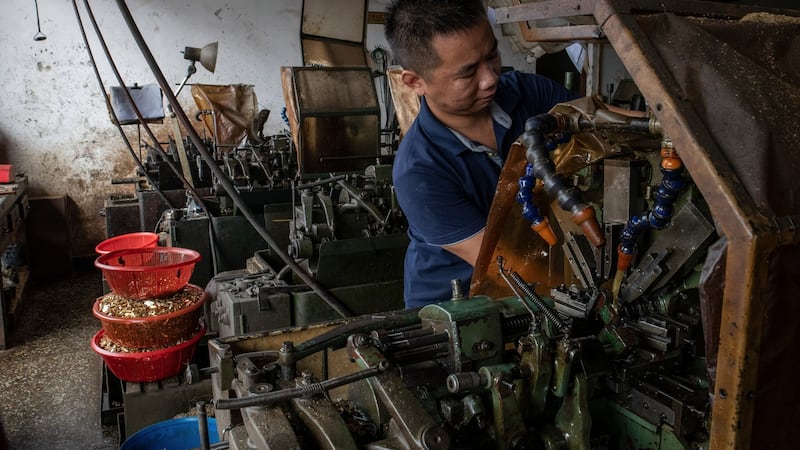A bread company cannot get all the power it needs for its bakeries. A chemicals supplier for some of the world’s biggest paint producers announced production cuts. A port city changed electricity-rationing rules for manufacturers four times in a single day.
China’s electricity shortage is rippling across factories and industries, testing the nation’s status as the world’s capital for reliable manufacturing. The shortage prompted authorities to announce on Wednesday a national rush to mine and burn more coal, despite previous pledges to curb emissions that cause climate change.
Mines that were closed without authorisation have been ordered to reopen. Coal mines and coal-fired power plants that were shut for repairs are also to be reopened. Tax incentives are being drafted for coal-fired power plants. Regulators have ordered Chinese banks to provide plenty of loans to the coal sector. Local governments have been warned to be more cautious about limits on energy use that had been imposed partly in response to climate change concerns.
"We will make every effort to increase coal production and supply," Zhao Chenxin, secretary-general of the National Development and Reform Commission, China's top economic planning agency, said at a news briefing on Wednesday in Beijing.
Depending on how much coal can be mined and burned soon, China’s electricity shortage could call into question whether Beijing can deliver in the coming months the strong economic growth that China’s people have come to expect.
The electricity crunch has also laid bare one of China's strategic weaknesses: It is a voracious, and increasingly hungry, energy hog. China has also emerged as the world's largest emitter of greenhouse gases by a wide margin, thanks mainly to its already heavy dependence on coal.
Energy-intensive
The world’s number two economy relies on energy-intensive industries like steel, cement and chemicals to power growth. While many of its newer factories are more efficient than their US counterparts, years of government price controls for electricity lulled other industries and most homeowners into putting off improvements.
As the winter heating season arrives, which will require China to dig up and burn still more coal, Beijing must confront whether to allow factories to continue running full-tilt producing industrial materials for global supply chains.

“They have to sacrifice something to make sure households will have heat and power,” said Chen Long, a co-founder and partner of Plenum, a Beijing economics and politics research firm. “They have to cut energy-intensive industries.”
Power rationing appears to have eased somewhat since late last month, when widespread blackouts and power cuts caught factories by surprise. But the winter heating season officially begins on Friday in the country’s northeast and continues into north-central China next month.
China faces tough choices. It burns more coal than the rest of the world combined and is the number two consumer of oil after the United States. China has been rapidly expanding its use of natural gas as well as solar panels, wind turbines and hydroelectric dams.
Yet China still does not have enough energy to meet demand. Even shifting to green energy could take significant power; the country’s tight electricity supplies have raised its costs for making solar panels.
Sustained tight supplies could force China to remake its economy, much as the high oil prices of the 1970s forced North American and European nations to change. Those countries developed more efficient cars, embraced other fuels, found plentiful new supplies and shifted manufacturing overseas, much of it to China. But the process was long, painful and costly.
For now, China is revving up coal consumption less than a month before world leaders gather in Glasgow to discuss confronting climate change.
Board members of the European Union Chamber of Commerce in China said on Wednesday that electricity shortages had worsened this week in some cities and eased in others. They predicted electricity problems would last until March.
Stoppages
Until enough power comes online, China’s factories risk unexpected and destabilising stoppages. Factories in China consume twice as much electricity as the rest of the country’s economy. China’s factories tend to require 10 per cent to 30 per cent more energy than counterparts in the West, said Ma Jun, director of the Institute of Public and Environmental Affairs, a Beijing research and advocacy group.
China has made more gains in energy efficiency in the past two decades than any other country, said Brian Motherway, head of energy efficiency at the International Energy Agency in Paris. But because China started the century with an inefficient industrial sector, it still has not caught up with the West, he said.
Zhao said that even with Wednesday’s push for more coal production, China would continue efforts to become more energy-efficient. He pointed out that the United States has also been burning more coal this year as the US economy has begun to rebound from the pandemic.

The impact of the power shortages has been mixed. Car assembly plants in northeastern China had been given permission to keep running, but tyre factories nearly stopped running. Wuxi Honghui New Materials Technology, which makes chemicals for the world’s paint manufacturers, disclosed that electricity cuts had hurt production.
Others disclosing difficulties include Toly Bread, with its national chain of bakeries, and Fujian Haiyuan Composites Technology, a manufacturer of battery cases for China’s fast-growing electric car industry.
The power outages have taken a human toll, which could worsen if homes lose power during winter. At least 23 workers were hospitalised in northeast China late last month with carbon monoxide poisoning when the power failed at a large chemicals factory.
The government has been taking steps to improve efficiency, like allowing utilities to raise prices for industrial and commercial users as much as 20 per cent so that they can buy more coal. China practically stopped new coal investments in 2016 as concerns developed about the industry’s sustainability. Anti-corruption officials have launched investigations focused on some important coal fields in the Inner Mongolia region, discouraging investment further.
Safety reviews
In late summer, many mines were closed for safety reviews. Flooding this autumn in Shanxi province, China’s biggest hub for coal mining, has forced the closing of at least one-tenth of the province’s mines.
With demand rising post-pandemic, prices jumped. Power plants found themselves losing money with every ton of coal they burned, so they ran at around three-fifths capacity. Chinese officials hope to replace much coal-fired power with solar power. But China’s manufacturing processes for solar panels require enormous amounts of electricity, much of it from coal.
For now, China’s worries are focused on the winter. During a severe cold snap in December, some cities ran short of coal and curtailed factory operations, turned off streetlights and elevators and limited heating of offices. The problems appeared even though power plants started the winter with several weeks of coal in stockpiles.
This year, China's biggest provinces have only nine to 14 days' worth in storage, according to CQCoal, a Chinese coal data firm. "The stocks are low, much lower than they should be," said Philip Andrews-Speed, a specialist in Chinese energy at the National University of Singapore. "And they're panicking for winter." – This article originally appeared in The New York Times.
















